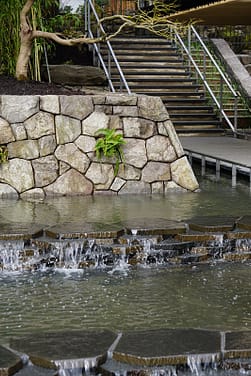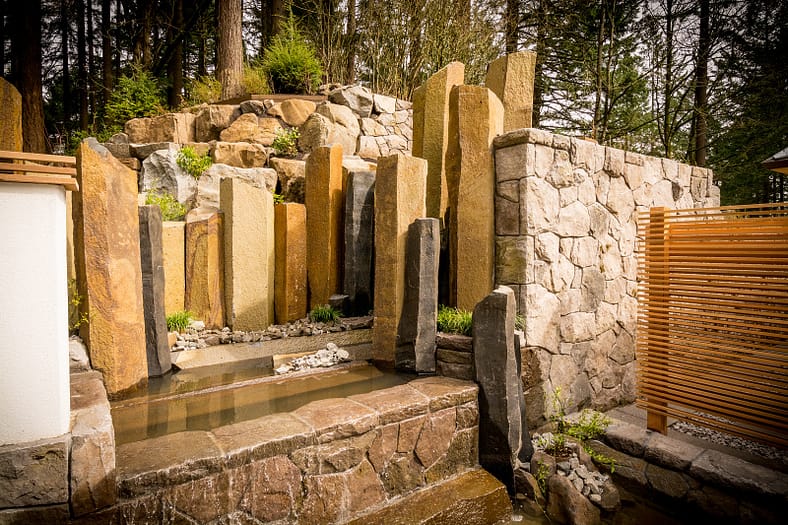Early in its design phase, the remarkable setting for the Cultural Crossing expansion reminded Portland Japanese Garden Curator Sadafumi Uchiyama of the concept of satoyama, a Japanese term describing the transition zone between the wild mountain foothills and the arable flat land. Sato means arable and livable land, and yama means hill or mountain.

Water hypnotically starts your journey from the stairstepped waterfalls around the Welcome Center to the pools along the zig-zag path. Just beyond the Antique Gate, you hear the unseen bubbling spring at the base of the hill.
Continuing your ascent across Sheila’s Bridge under the cantilevered Umami Café, you come to the upper creek with scattered broken boulders of basalt implying the wildness of the mountain landscape to come.
Uchiyama says the primary binding element of this journey is water as the “source of life” which has so much symbolism for both Japan and Portland. The Japanese Way of Tea provides a powerful lesson in how we should live in harmony with nature. Its principles of Wa-Kei-Sei-Jaku (harmony, respect, purity, and tranquility) have informed the design of Japanese gardens since the 15th century. Tea culture teaches wisdom and is manifested in plants, the abundant moisture of the rainy northwest climate, and the great Columbia River.
“The four principles of tea are related to the flow of water; the flow of wisdom from the Japanese Garden at its highest point, from our rooftops, under Sheila’s bridge, and down through the Entry Garden. It ultimately meets the force of life; the mighty Columbia,” said Uchiyama.

Water has played an important role in Uchiyama’s life. He was born in Kurume, a small town on the southern Japanese island of Kyushu. The famous Takachiho Gorge near Uchiyama’s hometown inspired him to design the Jubitz Oregon Terrace. It is one of the few places in the world with naturally formed columnar basalt.

“When I see basalt, that’s where my mind goes, but I never tried in a conscious way to equate it to the Takachiho Gorge. It’s where I am most familiar with columns of basalt. So when I saw it, somehow my brain registered my upbringing. I was probably following that as a design guideline,” he said.
His vision of the overall site design and new gardens was to create a subtle unfolding journey from the cacophonic noise of modern life to the peaceful tranquility of the existing garden oasis.
“I realized at the end of the process what was guiding me. I didn’t necessarily try to recreate or mimic those features, but somehow, maybe subconsciously I was following that journey of water.”